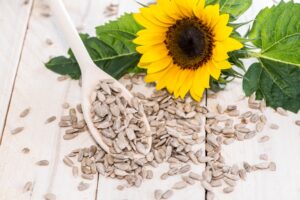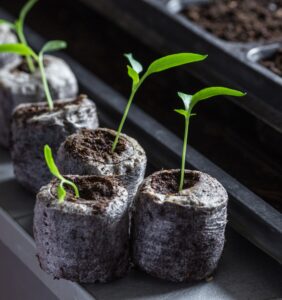When Should I Transplant Sunflower Seedlings?

In the world of gardening, sunflowers stand tall as symbols of happiness and resilience, drawing both seasoned gardeners and beginners to their sun-seeking blooms. With the growing trend towards sustainable living and the joy of home gardening, understanding the nuances of growing sunflowers, particularly when to transplant sunflower seedlings, has never been more relevant. This article will guide you through each crucial step, ensuring your sunflowers flourish.
Growing Sunflowers from Seeds Indoors

For some gardeners, starting their sunflower journey begins with planting seeds indoors. This method gives your sunflowers a head start, protecting them from early-season frosts and pests. Use quality seed-starting mix in pots or trays, placing the seeds about an inch deep. Sunflower seeds typically germinate within 7 to 10 days in warm conditions, so ensure they’re kept in a spot that receives plenty of light and warmth. Also, keep the light a bit low, as it helps the plants become more robust. By doing so, this controlled environment fosters strong, healthy seedlings, ready for the great outdoors when the time is right.
How to Tell If Sunflower Seedlings Are Ready for Transplant

Sunflower seedlings announce their readiness for transplanting in a few key ways. First, look for the development of their second set of true leaves, a reliable indicator that they’ve outgrown their initial confines. Generally, you want at least four true leaves before moving forward. Additionally, a robust root system should start to fill the confines of their pots, signaling a need for more space. These milestones typically occur a few weeks after germination, depending on the growing conditions and sunflower variety.
Optimal Season and Weather Conditions for Transplanting Sunflower Seedlings

The best time to transplant sunflower seedlings outdoors is after the last frost when the soil has warmed sufficiently. Sunflowers thrive in warm conditions and can be stunted or damaged by cold snaps. Ideal transplanting conditions include a mild, overcast day to prevent immediate sun exposure stress. This gentle introduction to the outdoor environment can significantly improve the seedlings’ chances of thriving once they’re planted outdoors.
Best Location to Transplant Sunflower Seedlings

Sunflowers are heliotropic in their early stages, meaning they follow the sun across the sky, so choosing a sunny spot is crucial. Select a location that receives at least 6-8 hours of direct sunlight daily. Sunflowers aren’t fussy about soil but prefer well-draining ground. Avoid spots prone to waterlogging or that remain in shadow for extended periods.
Preparing Sunflower Seedlings for Transplanting

Preparation is key to a smooth transition. Begin by hardening off your seedlings, gradually acclimatizing them to outdoor conditions over a week. This process involves exposing them to outside temperatures and sunlight incrementally, reducing transplant shock. Ensure your garden bed is ready, too, with loose, fertile soil to welcome the young plants.
How to Transplant Sunflower Seedlings Correctly

Transplanting day is crucial for your sunflower seedlings. Dig holes slightly larger than the seedlings’ root balls, spacing them according to the variety’s expected mature size. Gently remove the seedlings from their containers, trying not to disturb the roots unless they’re root-bound. If the roots are dense and tangled, gently loosen them. Then, place the seedlings in the holes. Finally, backfill with soil and water thoroughly to settle them in and eliminate air pockets.
Properly Spacing Sunflower Seedlings

Spacing is vital for sunflower seedlings to ensure they have enough room to thrive. Proper spacing prevents competition for nutrients and light, both of which are essential for healthy growth and maximum bloom size. Smaller varieties can be planted closer together, potentially as close as 6 inches apart. Taller sunflowers typically require at least 1 foot of space, while giant sunflowers need more room, so plant them about 2-3 feet apart.
Caring for Sunflower Seedlings After Transplanting

Post-transplant care involves regular watering to keep the soil moist but not soggy, especially during dry spells. Mulching can help retain soil moisture and suppress weeds. Watch for pests and diseases, and support taller varieties with stakes to prevent them from toppling over in strong winds.
Successfully Transplanting Sunflowers

Transplanting sunflower seedlings at the right time and with proper care sets the foundation for a garden filled with these joyful blooms. By paying attention to the readiness of your seedlings, the optimal conditions for transplanting, and providing the care they need in their new environment, you’ll be rewarded with a stunning display of sunflowers. Whether for their beauty, the seeds they produce, or the joy of gardening, sunflowers bring light and life to any garden space.